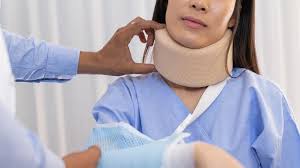
In the aftermath of an accident—whether a car crash, slip-and-fall, or workplace injury—understanding how and why injuries occurred is critical for determining liability, assessing claims, and supporting litigation. That’s where biomechanical accident reconstruction comes into play.
At Garrett Forensics, our biomechanical experts use science-based methodologies to analyze the forces, motions, and injury mechanisms involved in an incident. The goal? To determine whether the physical evidence supports the reported injuries. This approach helps legal professionals, insurers, and safety experts make informed, defensible decisions.
What Is Biomechanical Accident Reconstruction?
Biomechanical accident reconstruction is the scientific process of evaluating an incident by combining principles of:
Physics
Engineering
Human anatomy and physiology
Injury biomechanics
It focuses on the interaction between the human body and physical forces during an event. This field differs from traditional accident reconstruction (which focuses on vehicle movements and crash dynamics) by adding a critical layer: whether the forces involved in the event could have caused the reported injuries.
How Does It Work?
At Garrett Forensics, biomechanical accident reconstruction typically involves a step-by-step, multidisciplinary approach:
1. Incident Analysis
The process begins with a detailed review of the incident. This includes gathering all available data such as:
Police reports
Witness statements
Scene photographs
Vehicle damage reports
Surveillance footage (if available)
Our experts also consult traditional accident reconstruction findings to understand the broader dynamics of the event.
2. Review of Medical Records
A critical part of biomechanical analysis is reviewing the claimant’s medical records. Our experts examine:
Diagnoses and reported symptoms
Imaging reports (X-rays, MRIs, CT scans)
Clinical notes and timelines
Surgical records, if applicable
We evaluate whether the type, location, and severity of the injuries are biomechanically consistent with the forces and motion associated with the incident. For example, if a crash involved minimal acceleration and minor vehicle damage, but the medical records report significant spinal trauma, this may warrant further scrutiny.
This medical context allows our biomechanical experts to correlate clinical findings with mechanical realities, distinguishing between pre-existing conditions, new trauma, and possible exaggeration or unrelated injuries.
3. Force and Motion Evaluation
Using physics-based models, we calculate the magnitude, direction, and duration of forces involved. We analyze how these forces would affect a person’s body given their position, size, and movement at the time of the incident.
This may include:
Delta-V (change in vehicle velocity)
Acceleration/deceleration profiles
Impact angles and seatbelt engagement
Body motion (kinematics) during and after impact
4. Injury Consistency Assessment
We then compare the forces and motions involved to established injury tolerance thresholds—scientific data describing how much force is typically required to cause certain injuries.
Questions we often address include:
Was the force high enough to plausibly cause a disc herniation or concussion?
Are the reported injuries consistent with the physics of the event?
Could an alternative mechanism (e.g., a pre-existing condition or a prior event) explain the symptoms?
5. Expert Reporting and Testimony
Finally, we compile all findings into a clear, defensible report. These reports are structured for legal use and include:
Technical analysis
Injury causation opinion
Medical consistency review
Supporting visuals and data models
Our experts are trained to present their conclusions in depositions, arbitrations, and trials, offering testimony that helps clarify complex biomechanical concepts for judges and juries.
Why It Matters
Biomechanical accident reconstruction adds a layer of scientific credibility to injury analysis. It helps identify fraudulent, exaggerated, or misattributed injury claims—while also supporting legitimate claims with evidence-based validation.
Key Benefits Include:
Objective analysis of injury causation
Clarification of disputed facts
Reduction in claim disputes and litigation costs
Strengthened case strategy for attorneys and insurers
Who Uses Biomechanical Reconstruction?
Attorneys (plaintiff and defense) seeking to prove or challenge injury causation
Insurance adjusters and SIU teams evaluating the validity of injury claims
Risk managers and safety professionals reviewing incident causation
Manufacturers facing product liability or workplace injury claims
Real-World Applications
Our team has successfully applied biomechanical reconstruction in cases involving:
Low-speed vehicle impacts with soft-tissue injury claims
Rear-end collisions with disputed whiplash injuries
Pedestrian accidents involving head or spinal trauma
Slip-and-fall incidents in commercial spaces
Workplace equipment malfunctions causing musculoskeletal injuries
Conclusion
Biomechanical accident reconstruction bridges the gap between physical evidence and medical diagnosis, providing a scientifically grounded approach to understanding injury causation. At Garrett Forensics, we go beyond assumptions and anecdotal testimony—our experts apply proven scientific principles, detailed engineering analysis, and careful medical record review to determine whether the mechanics of an incident align with the claimed injuries.
This method is invaluable in today’s litigation and claims environment, where the credibility of injury reports can directly impact case outcomes. Whether you’re dealing with a contested auto collision, questionable workplace injury, or high-stakes liability claim, our biomechanical experts deliver objective, evidence-based insights that hold up under scrutiny.
By partnering with Garrett Forensics, attorneys, insurers, and legal professionals gain a trusted ally in uncovering the facts, mitigating risk, and building compelling, defensible cases. When the truth matters, rely on the clarity and precision of biomechanical science.
Need biomechanical insight on an injury case?
Contact Garrett Forensics today to consult with a certified Biomechanical Expert.
Recent Posts
- Collaborating Experts: When Forensic Engineers and Attorneys Work Together
- Product Failure Analysis: When Consumer Devices Become Courtroom Evidence
- Forensic Electrical & Fire Investigation Collaboration: When Multidisciplinary Expertise Saves the Case
- Biomechanical Injury Analysis: How Science Proves or Disputes Injury Claims
- How Structural Engineers Help Uncover the Cause of Building Failures

Leave a Reply